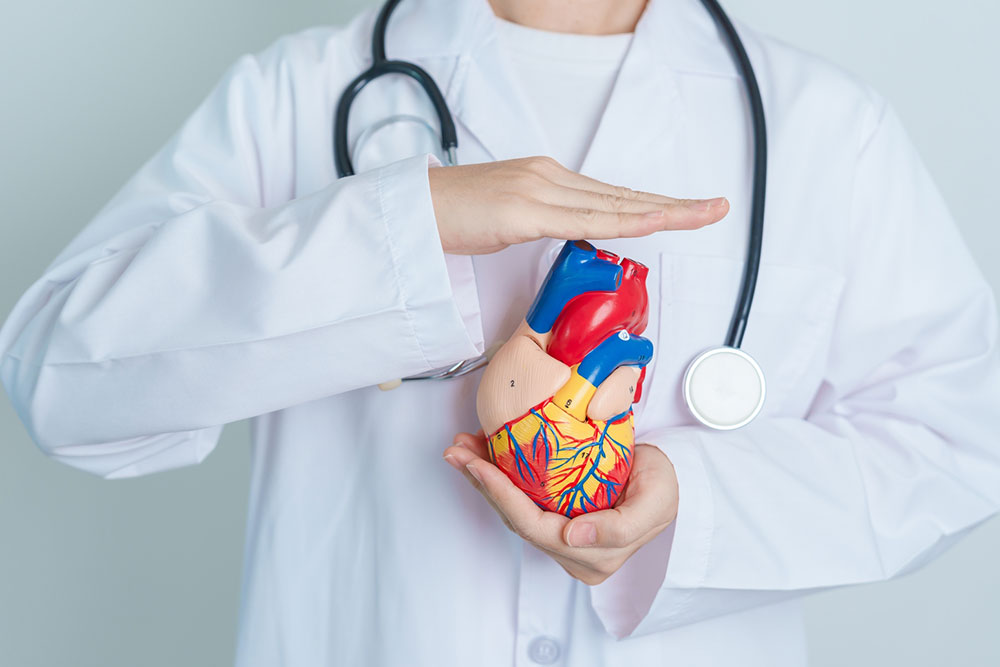
Atherosclerosis – Causes, symptoms, and management options
Atherosclerosis is a slow-developing condition affecting the cardiovascular health. It is often referred to as the “hardening of the arteries” caused by the gradual plaque buildup in the vessels, which can clog the arteries and restrict blood flow in the body. While the condition develops over a long period and does not always have immediate symptoms, recognizing its causes and risk factors can help one get a timely diagnosis, preventing further complications.
Causes and risk factors
Atherosclerosis begins with the innermost layer of the artery walls—the endothelium. Various factors contribute to the development of this condition:
Cholesterol buildup: High levels of low-density lipoprotein (LDL) cholesterol in the blood can accumulate along the artery walls. This “bad” cholesterol combines with other substances and forms plaques that narrow the arteries.
Inflammation: Chronic inflammation can damage the arterial walls and promote plaque formation.
High blood pressure: Uncontrolled high blood pressure can strain artery walls, making them more susceptible to damage and plaque buildup.
Diabetes: High blood sugar levels can damage both the arteries and the lining cells, increasing the risk of plaque development.
Genetic predisposition: A family history of atherosclerosis can increase the risk of developing this condition.
High levels of homocysteine: Elevated levels of homocysteine, an amino acid in the blood, can damage the arterial lining and increase the risk of atherosclerosis.
Symptoms
Atherosclerosis is often a silent condition, progressing for years before symptoms become noticeable. Over time, the following symptoms may be experienced depending on the arteries affected:
Chest pain: If the arteries supplying blood to the heart (coronary arteries) are affected, one may experience chest pain or angina. This develops due to reduced blood flow to the heart muscle.
Leg pain: If the arteries in the legs (peripheral arteries) are affected, one might experience pain, numbness, or weakness in the legs. This is known as peripheral artery disease (PAD).
Shortness of breath: Atherosclerosis in the arteries leading to the lungs can cause breathlessness.
Confusion and trouble speaking: When the buildup affects the arteries to the brain (carotid arteries), it can lead to a transient ischemic attack (TIA) or stroke, which may cause confusion, difficulty speaking, or sudden weakness on one side of the body.
High blood pressure: Atherosclerosis can contribute to high blood pressure (hypertension), which is a risk factor for heart disease.
Sudden weakness or numbness: Plaque buildup in the carotid arteries that supply the brain can lead to transient ischemic attacks (TIAs) or strokes, which may cause sudden weakness, numbness, or paralysis, typically on one side of the body.
Fatigue: Reduced blood flow can lead to overall fatigue and weakness, as the body’s organs and muscles may not receive adequate oxygen and nutrients.
Treatment
Managing atherosclerosis often involves a combination of lifestyle changes, prescription treatment, and medical procedures. Here is what treatment entails:
Lifestyle changes: Adopting a heart-healthy lifestyle is crucial for dealing with the condition. This includes following a balanced food regimen low in saturated fats and cholesterol, engaging in regular physical activity, and managing stress.
Angioplasty and stent placement: In some cases, angioplasty may be recommended. This procedure involves inflating a balloon in the narrowed artery to widen it. A stent may be placed to help keep the artery open.
Coronary artery bypass grafting (CABG): If atherosclerosis severely restricts blood flow to the heart, the doctor may recommend CABG surgery. During this procedure, a healthy blood vessel is used to bypass the blocked artery.
Natural remedies
While treatment is vital, some natural remedies may complement the prescribed management options:
Food-based changes: Here are some foods and nutrients to consider incorporating in the daily meal plan when dealing with atherosclerosis:
– Omega-3 fatty acids are healthy fats found in fatty fish like salmon and flaxseeds and can help lower cholesterol levels and reduce inflammation.
– Garlic is known for its potential to lower blood pressure and reduce cholesterol levels.
– The active compound in turmeric, curcumin, has anti-inflammatory and antioxidant properties.
– Green tea contains compounds that may improve cholesterol levels and reduce blood pressure.
– Oats are rich in soluble fiber, which can help lower LDL cholesterol levels.
– High-quality extra virgin olive oil is rich in monounsaturated fats and antioxidants. It can be used in cooking or as a salad dressing to support heart health.
– Cayenne pepper contains capsaicin, which may improve blood circulation and reduce the risk of blood clots.
Stress management: Practicing stress-reduction techniques like meditation, yoga, and regular exercise can help control atherosclerosis risk factors.
Learning about the causes and risk factors of atherosclerosis and recognizing its symptoms can help one seek timely treatment. Further, following a heart-healthy lifestyle can reduce the risk of the condition or help prevent further complications if one already has atherosclerosis. One should consult a doctor if they believe they are at risk of developing the condition.




